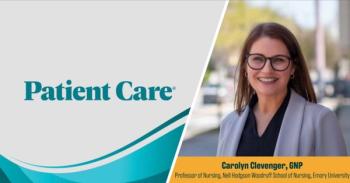
Functional Deficits Poststroke Found More Pronounced in Study Group with Lower Mean Oxygen Saturation During Sleep
At 3 months following ischemic stroke, lower mean oxygen saturation but not apnea-hypopnea index was associated with functional deficits, according to a French research team.
Results of a recent study (NCT01561677) assessing the impact of different sleep health parameters in poststroke patients, found that poorer functional outcomes at 3 months were associated with lower mean oxygen saturation, but not with apnea-hypopnea index (AHI). Other parameters such as restless legs syndrome (RLS), low total sleep time (TST) and REM sleep, insomnia, depressive symptoms and fatigue were more frequent in patients with less favorable outcome.
Published in the Journal of Sleep Research, the analysis included 61 participants (mean age, 71.8 years) who completed the study; 51 (83.6%) had OSA (21.3% severe apnea), 10 (16.7%) daytime sleepiness, 13 (24.1%) insomnia, 3 (5.7%) depression, and 20 (34.5%) with RLS. Among those with severe OSA (n = 13), defined by an AHI greater than 30/h, 7 were allocated to continuous airway pressure (CPAP) treatment, 5 received sham-CPAP, and 1 refused treatment. At baseline and 3-month follow-up, there were no between-group differences in Barthel Index (BI), modified Rankin score (mRS), and Stroke Scale (NIHSS).
Led by Yves Dauvilliers, MD, PHD, director of the Sleep and Wake Disorders Center at Gui de Chauliac Hospital, in Montepellier, France, 50 (84%) patients had a complete evaluation at baseline and at month 3. Three months after ischemic stroke, the median BI increased from 55.0 (25.0-85.0) to 95.0 (55.0-100.0); however, there was no difference between the 4 groups of participants (AHI: <5, 5-15, 15-30, and ≥30 per hr) or the 2 groups with AHI greater than or less than 15 per hr. On a secondary outcome, the median mRs and mean NIHSS score decreased from 3 (2; 5) to 2.5 (2; 3) and 6.8 (±4.7) to 4.1 (±3.6) from day 15 [±4] to month 3, respectively, although outcomes were not different based on the group composition.
When comparing participants with favorable outcomes to those with significant disability, results at 3 months showed lower mean oxygen saturation during sleep and a higher number of patients with at least 3% ODI of at least 15 hr in the latter group. Notably, there was no difference in AHI. Moreover, moderate to severe insomnia and higher fatigue scores and depressive symptoms were more frequent in the significant disability group. In addition, TST and sleep efficiency were lower only in participants with BI of less than 95.
When comparing participants with favorable outcomes to those with significant disability, results at 3 months showed lower mean oxygen saturation during sleep and a higher number of patients with at least 3% ODI of at least 15 hr in the latter group. Notably, there was no difference in AHI.
At 3 month follow-up, 1 death due to a noncardiovascular cause in the moderate OSA group and 1 cardiovascular event in the mild OSA group were reported. Among those with poorer outcomes, higher scores in Chalder’s fatigue scale and BDI-II were reported at both baseline and 3-month follow-up. Conversely, no significant difference was observed between relative changes in the ISI, BDI-II, and Epworth Sleepiness Scale and functional recovery.
In the nested randomized trial of those with severe OSA, BI percentage relative changes between 3 months and 2 weeks were no different between those on CPAP (25% [11.1; 80.0]) and those on sham (33.% [17.7; 111.1]). Coming into the analysis, no differences were observed between the 2 groups in terms of age, sex, and body mass index. Baseline BI tended to be higher in the CPAP group than in the sham-CPAP group (80 [25; 90] vs 45 [10; 75]; not significant).
Dauvilliers et al concluded that, "more prospective studies are needed to better understand the bidirectional relationship between the different sleep disorders and stroke, their co-existence, severity, and the effect of their management on recovery after stroke in the framework of precision medicine."
Source: 1. Denis C, Jaussent I, Guiraud L, et al. Functional recovery after ischemic stroke: impact of different sleep health parameters. Journ of Sleep Res. 2024;33(1):e13964. doi:10.1111/jsr.13964
Newsletter
Enhance your clinical practice with the Patient Care newsletter, offering the latest evidence-based guidelines, diagnostic insights, and treatment strategies for primary care physicians.






















































































































































































































































































